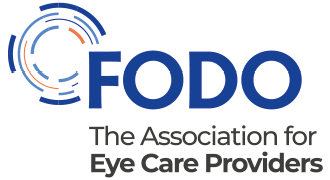Updates
Scope
This guidance applies to GOS in England and covers:
- Second pairs for children and adults
- Non-tolerance voucher
- How to submit second pair and non-tolerance applications
Patients who have an HES voucher should apply to the individual NHS Trust concerned.
Second pairs for children and adults
Patients are not automatically entitled to a spare pair of spectacles of the same prescription under GOS, but permission may be sought from the NHS England Regional Local Team (RLT) to supply a second pair in "exceptional circumstances" by submitting a second pair application form.
Second pairs should not be provided "just in case" where there is no evidence of need. This guidance therefore explains what are normally considered as "exceptional circumstances" for these purposes.
Applications for second pairs will normally be approved if: A child is aged seven or under and the prescription falls into the GOS 3 band B or above and there is a history of spectacle loss or breakage (two or more repairs in six months)
or
A child is aged over seven or is a "looked after child" and they have a further illness that causes the frequent breakage/loss, the prescription falls into the GOS 3 band B or above, there is a history of spectacle loss or breakage (two or more repairs in six months) and there is evidence to suggest that the patient's education or quality of life is likely to be affected if they are without their spectacles.
Second pairs may also be approved with discretion for children of any age if:
The prescription falls into the GOS 3 band, is in voucher A (those children with high A values may still be at risk) and a clinical adviser has reviewed the case and is satisfied that the application meets the necessary criteria.
It is rare that a request will be made for an adult to have a second pair. However, where an application is made the criteria for approval will be similar to that for older children.
Non-tolerance voucher
NHS England considers a patient to be non-tolerant to an optical appliance if they are unable to adjust to new spectacles and have visual discomfort which subsequently requires a modification to the prescription to be made even though the prescription issued may have been 'clinically' correct at the time of testing.
Retests and second opinions
If a patient is non-tolerant of their spectacles they may have another GOS sight test. The GOS1 or GOS 6 should be annotated with 'retest/non-tolerance'. It is recommended that the patient should, if at all possible, return to have the retest with the original prescriber. However, this may be done by another practitioner if necessary. In all cases the spectacles should be verified as correct to the prescription before starting a further test. Approval does not need to be sought to carry out the second sight test but approval to issue a second GOS 3 is required.
Acceptance criteria
Applications for a new GOS 3 voucher on the grounds of non-tolerance can be submitted to the NHS England RLT if the following criteria are met:
- The tolerance problem has been present from the time of supply (rather than starting later)
- The cause of the problem has been shown to be related to the prescription (i.e. the strength of the lenses), not the type of lens or appliance.
NHS England's interpretation of the regulation is that non-tolerance should be defined by the prescription and not by the type of optical appliance that has been provided. Therefore, requests for an additional GOS 3 to allow a change from single vision to bifocal/varifocal or vice versa will not be considered as meeting the acceptance criteria unless there is also a change in prescription.
Patients who have received their original spectacles from the Hospital Eye Service should apply to the individual NHS Trust concerned if they have a problem adjusting to the prescription.
How to submit second pair and non-tolerance applications
All applications for second pair and non-tolerance vouchers should be sent to your NHS England RLT using standard national templates, by following the following process:
- Complete the relevant voucher application form on the patient's behalf
- Submit the completed form to the NHS England RLT by secure email if you have an nhs.net account, encrypted email or by fax or post. Download RLT contact details
- The RLT will normally notify you of its decision within one week
- Once you have received a decision from the RLT you must retain a copy of the application form for your records for post-payment verification
- If the application has been approved, you should submit a GOS 3 to PCSE.1
Updates
Originally published: April 2018
Reviewed: January 2020
Review date: March 2022
Info: This Optical Confederation and LOCSU guidance was updated on 13 January 2020 as part of FODO's website upgrade. Minor amendments were made to the main body of text and the layout updated. Primary Care Support England (PCSE) 23 April 2018 new standard process for claims was also added.
Reference and notes
1. Source: PCSE in the Optician's Bulletin 2018 May, https://pcse.england.nhs.uk/news/2018/may/opticians-bulletin/#second_pair_non_tolerance. New standard processes for second pair and non-tolerance applications. Accessed 12 January 2020.

 Patients and public
Patients and public
 Policymakers
Policymakers Members
Members News and views
News and views
